Back in 1990, Atari released the TT030 workstation.
It was a beastly machine. Powered by a 68030 CPU at 32 MHz. A dedicated FPU. Two different types of RAM - System RAM (up to 10 MB) and TT RAM (up to 256 MB). A 3.5” floppy, a 50 MB hard drive, SCSI, MIDI, VGA, RS-232 (four of ‘em). And a resolution of up to 1280×960 (monochrome) or 320×480 (256 colors).
In 1990. This was one seriously powerful rig.
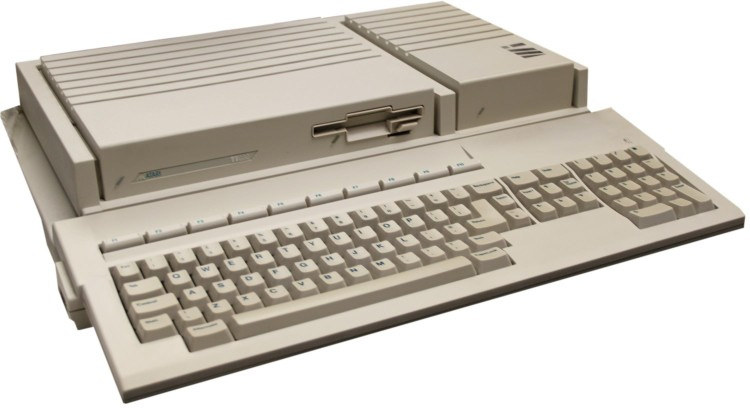
Originally the TT030 shipped with a version of Atari TOS.
AtariTOS is a fork of GEM. Learn more about GEM (and Atari TOS and Multi TOS) in “Looking at 1980's GEM in 2021”. It is a fascinating system.
But, by 1992, a variant of the TT030 (known as the TT/X) shipped with a full blown UNIX operating system: Atari System V
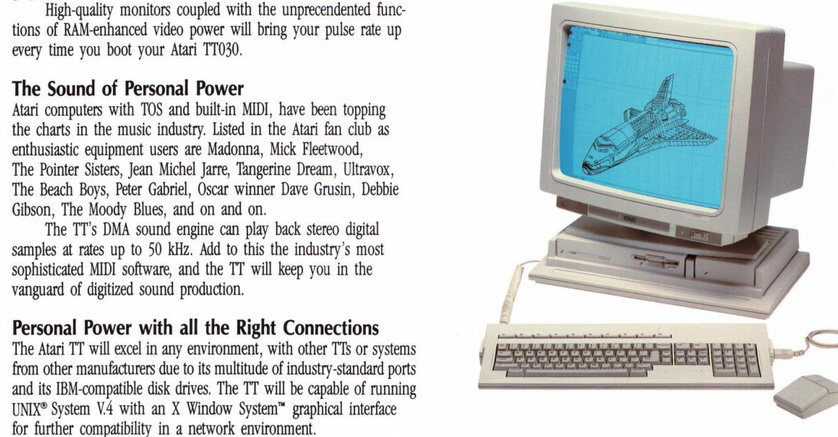
So what did a UNIX System V look like on an Atari? Well. It looked like this:
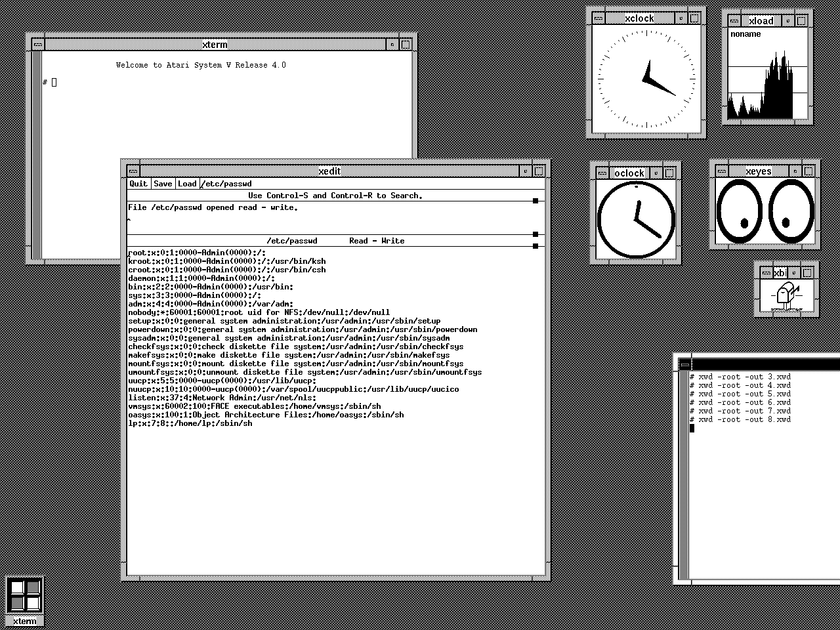
For the modern day UNIX (and Linux, etc.) users out there… this is going to look immediately familiar. A nice little xterm shell, xedit, even good old xeyes.
You can find a full listing of the packages included in Atari System V developer pre-release release notes. Which include, you’ll note, X-Windows, Motif window manager, and a complement of GNU compilers and build tools
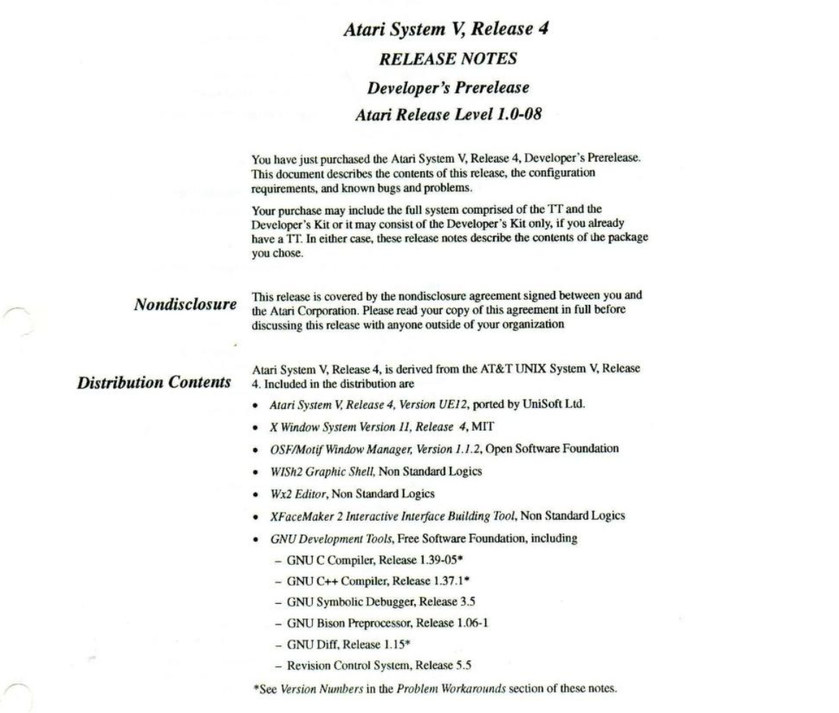
An Atari TT030 workstation could dual-boot both TOS and Atari System V UNIX. System V even included a graphical tool to select the preferred operating system to boot.
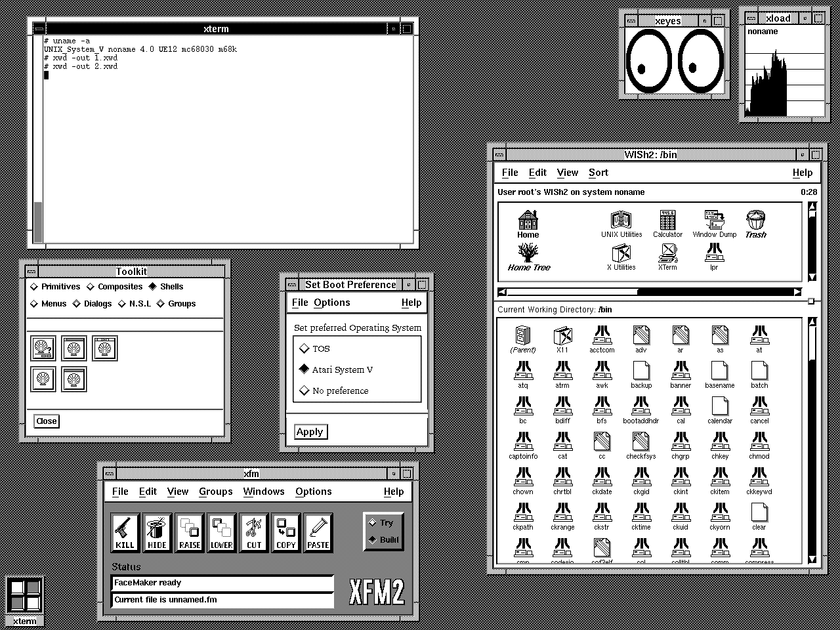
When Atari System V shipped in 1992… this is the box it came in…
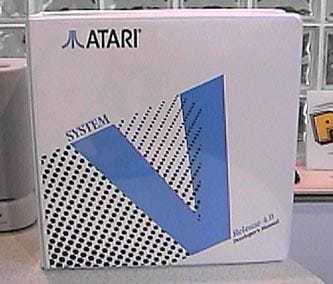
And the floppies it installed from…
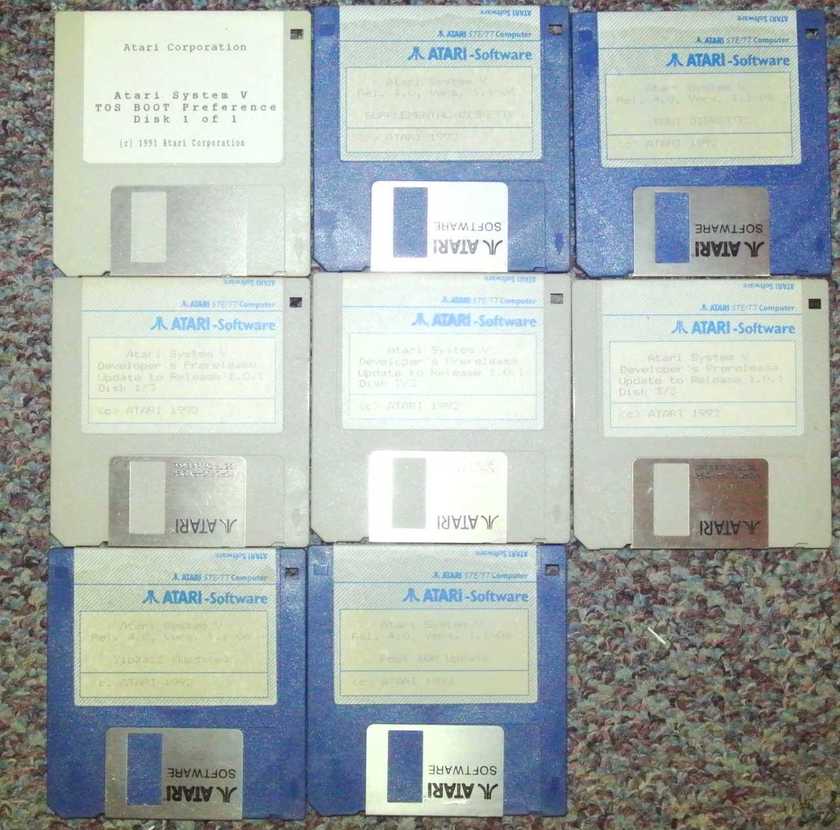
A version of NCSA Mosaic was even ported. Which means the early web is accessible from an Atari TT030.
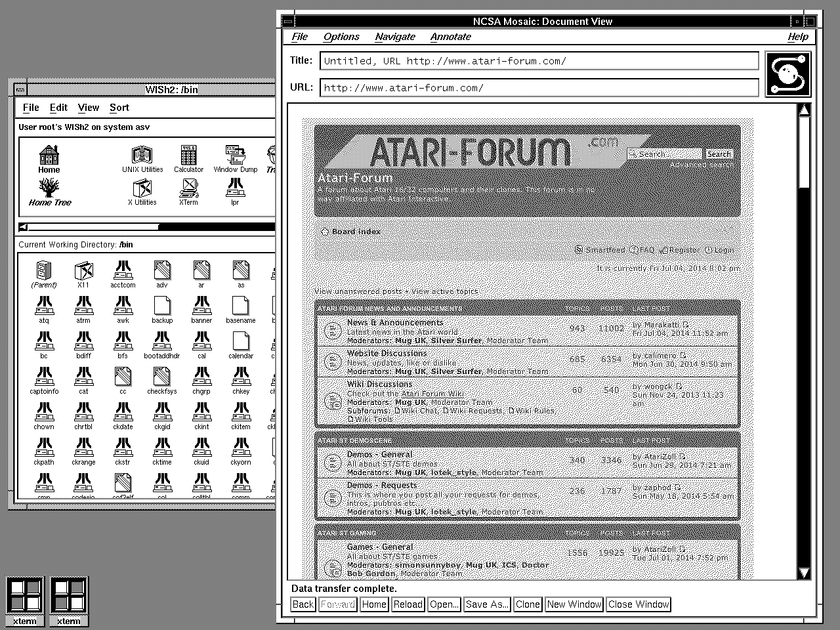
AtariUNIX.com hosts a small collection of software ports (including Mosaic). As well as some disc images for Atari System V, MINIX, and Net BSD for the TT030.
Neither the TT030, nor the Atari port of System V, saw much success. The TT030 workstation was abandoned in favor of the, more consumer focused, Atari Falcon. And, rather quickly, Atari’s adventures into the land of UNIX were forgotten by almost all.
It was, just the same, an incredibly powerful OS, backed up by what was (for the time) one heck of a machine.
What could have happened in the workstation space had Atari seen some additional success in the market? Could Atari have effectively competed against SGI, SUN, HP and the rest of the UNIX workstation crowd?
It certainly would have been interesting to see.













